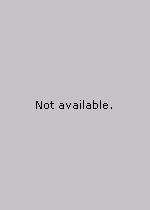| 2/2002 - 2 |
Modelling Artificial Social Systems with Petri NetsCalin CIUFUDEAN, George MAHALU |
| Extra paper information in |
| Click to see author's profile in |
| Not available online | Views: 1,465 |
Author keywords
Artificial Social Systems, Petri nets, Social Laws, Multi-agent Systems, formal verification, eventuality
References keywords
References keywords will be displayed on the next page reload.
About this article
Date of Publication: 2002-04-02
Volume 2, Issue 2, Year 2002, On page(s): 10 - 14
ISSN: 1582-7445, e-ISSN: 1844-7600
Digital Object Identifier: Not assigned
Abstract
This paper proposes a new model for Artificial Social Systems(ASS) behaviours. ASS exist in practically every multi-agent system, and play a major role in the performance and effectiveness of the agents. This is the reason why we introduce a more suggestive model for ASS. To model these systems, a class of Petri nets is adopted and briefly introduced in the paper. This class allows representing the flow of physical resources and control information data of the ASS's components. The issue of the verification of the interconnections or interfaces among the Petri nets of primary components is realised with the help of the functional abstractions of the Petri net model of these components. |
| References | | | Cited By |
On-line references are not available - see the PDF file if available.
Faculty of Electrical Engineering and Computer Science
Stefan cel Mare University of Suceava, Romania
All rights reserved: Advances in Electrical and Computer Engineering is a registered trademark of the Stefan cel Mare University of Suceava. No part of this publication may be reproduced, stored in a retrieval system, photocopied, recorded or archived, without the written permission from the Editor. When authors submit their papers for publication, they agree that the copyright for their article be transferred to the Faculty of Electrical Engineering and Computer Science, Stefan cel Mare University of Suceava, Romania, if and only if the articles are accepted for publication. The copyright covers the exclusive rights to reproduce and distribute the article, including reprints and translations.
Permission for other use: The copyright owner's consent does not extend to copying for general distribution, for promotion, for creating new works, or for resale. Specific written permission must be obtained from the Editor for such copying. Direct linking to files hosted on this website is strictly prohibited.
Disclaimer: Whilst every effort is made by the publishers and editorial board to see that no inaccurate or misleading data, opinions or statements appear in this journal, they wish to make it clear that all information and opinions formulated in the articles, as well as linguistic accuracy, are the sole responsibility of the author.



